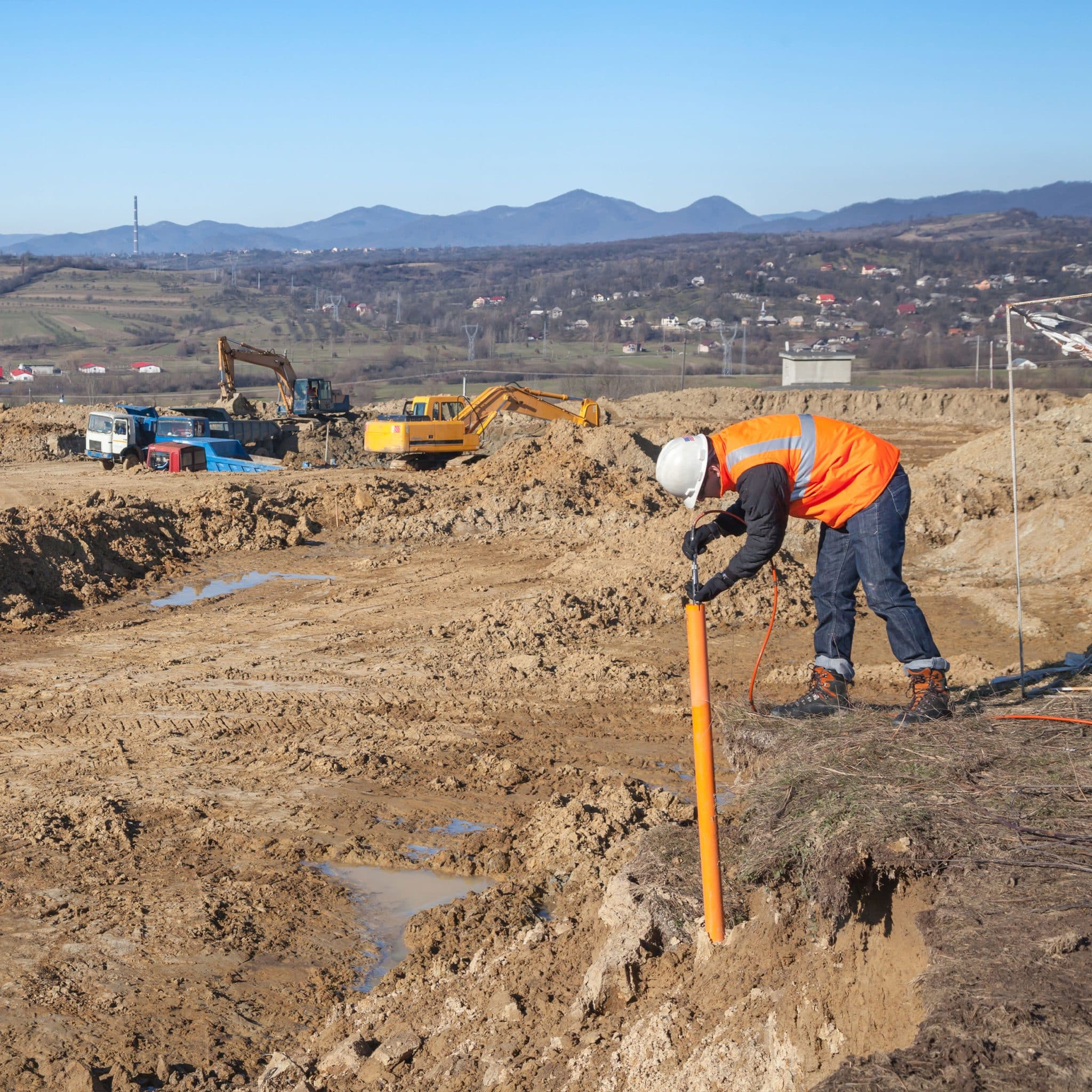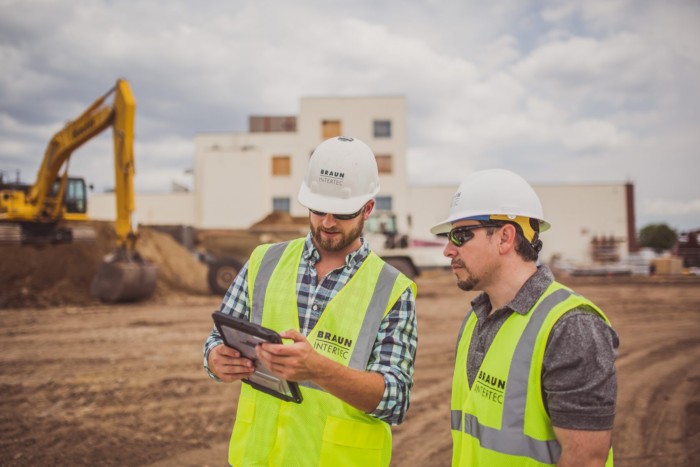Tailings Engineer: Necessary Expertise for Sustainable Waste Administration in Mining
Tailings Engineer: Necessary Expertise for Sustainable Waste Administration in Mining
Blog Article
Comprehending the Important Duty of the Geotechnical Industry in Modern Construction Projects and Framework Growth
The geotechnical sector is a cornerstone of modern building and facilities advancement, providing important insights right into dirt behavior that directly influence task end results. With advanced dirt evaluations and innovative engineering services, geotechnical professionals not just guarantee structural stability yet likewise address sustainability concerns amid evolving environmental standards.
Importance of Soil Analysis
Soil analysis plays a vital role in the geotechnical market, functioning as the structure for informed decision-making in building and construction jobs. Accurate soil examination is important for establishing the suitability of a website for various kinds of frameworks, including residential homes, business buildings, and bridges. By assessing soil make-up, stamina, density, and wetness material, designers can prepare for prospective difficulties and minimize risks connected with ground instability, disintegration, and negotiation.
The assessment process typically involves a series of tests and monitorings that provide crucial details concerning the subsurface problems. This information educates the layout and construction processes, guaranteeing that frameworks are improved strong ground with ample assistance. In addition, comprehending the soil profile enables engineers to choose proper building techniques and materials, enhancing resource use and lessening prices.
In addition to ensuring structural stability, soil assessment adds to ecological sustainability. By determining potential contamination or adverse impacts on bordering ecological communities, designers can implement strategies to shield these natural deposits. Generally, comprehensive dirt evaluation is essential in the geotechnical area, underpinning the security, efficiency, and ecological obligation of building and construction jobs.
Key Geotechnical Strategies
A variety of crucial geotechnical methods are employed to enhance the security and evaluate and efficiency of building sites. One fundamental technique is soil sampling and screening, which allows designers to determine the chemical and physical buildings of the ground. This information is important for making informed decisions pertaining to foundation style and building and construction approaches.
Another vital strategy is website characterization, which involves the in-depth analysis of dirt and rock problems with approaches such as borehole drilling and in-situ testing. Methods like Requirement Infiltration Examinations (SPT) and Cone Infiltration Examinations (CPT) provide beneficial data on soil stamina and stratigraphy.
Ground renovation methods, such as dirt stabilization and grouting, are also vital in enhancing the load-bearing ability of weak dirts. These approaches can minimize negotiation and boost total website problems.
Additionally, incline stability analysis is crucial for identifying potential landslide risks and guaranteeing the security of excavations. This evaluation often employs mathematical modeling and restriction balance techniques to predict soil behavior under different problems.
Integrating these geotechnical techniques right into building and construction preparation not just enhances project end results yet likewise guarantees the long-lasting sustainability of infrastructure development.
Influence On Construction Safety

In addition, efficient geotechnical design involves applying mitigation approaches for identified dangers. This may include soil stablizing methods, preserving structures, or drain systems read this article to alleviate hydrostatic pressure. By resolving these elements, building groups can reduce the probability of crashes and boost worker security.
Furthermore, continual monitoring of site problems is critical during building. Geotechnical tools can give real-time information concerning ground motion and security, allowing for prompt treatments when essential.
Fundamentally, the geotechnical industry plays a critical function in securing building and construction projects. By focusing on ground honesty and using strenuous analysis methods, the geotechnical industry not only shields the labor force however likewise adds to the durability and dependability of built infrastructure.
Sustainability in Geotechnical Practices

In addition, geotechnical engineers are currently utilizing advanced innovations, such as geosynthetics, which enhance dirt stability while lowering the volume of material needed. This not only saves resources yet likewise brings about less waste generation (geo tech engineer). The integration of sustainable design concepts right into geotechnical engineering motivates using renewable resource sources in building and construction processes, even more lowering carbon exhausts
By carrying out these evaluations, geotechnical experts can establish strategies that reduce unfavorable effects, guaranteeing compliance with environmental regulations. Overall, the focus on sustainability within geotechnical techniques not just adds to the durability and resilience of infrastructure but likewise advertises an accountable method to land and resource management.
Future Trends in Geotechnical Engineering
Development is driving the future of geotechnical engineering, as emerging innovations and approaches improve the market. The assimilation of sophisticated information analytics and expert system is readied to transform website investigation and risk analysis, making it possible for designers to make more enlightened decisions based upon real-time data. The usage of geosynthetic materials is getting grip, using lasting solutions that improve soil stability and reduce environmental influence - geo tech engineer.
An additional significant fad is the fostering of automated and robotic systems for monitoring and building processes. These technologies not just improve precision however likewise enhance safety by reducing human involvement in hazardous environments. In addition, the execution of Structure Info Modeling (BIM) in geotechnical style assists in enhanced collaboration amongst stakeholders, maximizing job shipment and decreasing costs.
As environment modification postures brand-new difficulties, the industry is increasingly concentrating on strength and versatility in design techniques, making certain framework can endure extreme weather occasions. The ongoing pattern towards sustainability will drive innovation in environment-friendly materials and techniques, aligning geotechnical design with more comprehensive ecological goals. Jointly, these trends will certainly useful source shape a more reliable, sustainable, and resistant geotechnical landscape for future projects.
Final Thought

The geotechnical market is a keystone of modern construction and infrastructure development, giving essential insights right into soil actions that directly affect job end results. engineer of record.Soil analysis plays an important role in the geotechnical market, offering as the foundation for notified decision-making in construction jobs. On the whole, extensive dirt assessment is vital in the geotechnical field, underpinning the safety, effectiveness, and ecological responsibility of building tasks
Construction security is dramatically influenced by geotechnical methods, as the security and integrity of the ground directly influence the overall safety and security of a building website.In verdict, the geotechnical industry is essential in contemporary building and construction and infrastructure development, supplying essential assessments that guarantee structural stability and safety.
Report this page